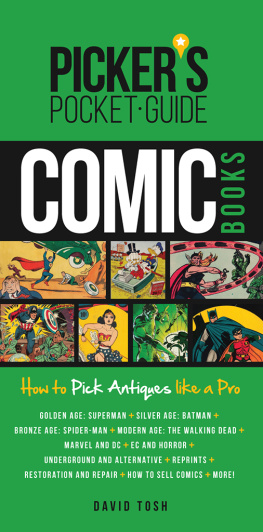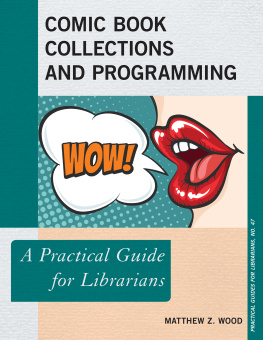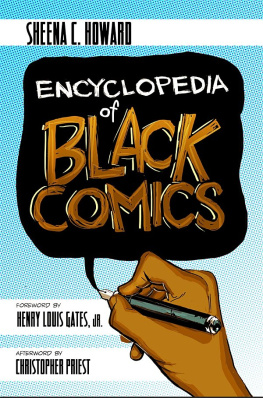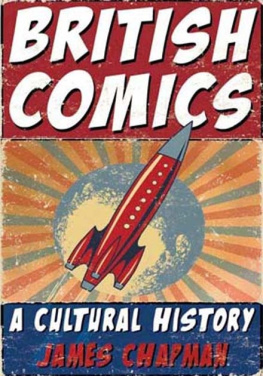Contents
Guide
PICKERS
POCKET GUIDE
COMIC BOOKS
How to Pick Antiques like a Pro
DAVID TOSH
CONTENTS
Foreword
They say the Golden Age of Comic Books is the most influential of them all. No argument here. But growing up in the 1980s had more than its fair share of milestones still relevant today. It was a grand time to be a comic book reader: Watchmen. Dark Knight Returns. Batman: Year One. First Comics Teenage Mutant Ninja Turtles. DCs Crisis. Newsstand books were 75 cents (as a Michigan kid that was equal to seven returnable aluminum cans plus a nickel from my dads bowl of change). By the 1980s, everyone owned a healthy stack of comics; and in 1986, I turned 10 years old.
That was the year I wanted nothing more than to get into the comic book shop. Thats where the real stories were the weighty ones. The types of stories my parents did not want me to read. This, of course, meant I wanted to read them even more.
By the time the 1990s rolled in, my attention span for comics was displaced (somewhat, never fully) by girls, high school, and summer jobs. Something changed about the comics then, too. Suddenly every copy became a Collectors Edition. Slick covers were accented with diecut-limited edition-foil-five variants-lenticular special effects. You didnt have to wait decades for your favorite books to increase in value - it only took weeks. By 1995, it seemed Beanie Babies and four-year-old copies of X-Men #1 were in a cage match to see which one could quadruple in value by the end of the summer. At least, thats what we were told.
If you think the after effects of a decade-long trend in insta-values died with the Clinton administration, then this book is exactly what you need to learn the difference between a six-figure comic book and a reading copy. Headline-grabbing sales of multi-million dollar comic book auctions and a decades worth of reality TV make people wonder: What are my comics worth?
Thats why David Tosh is the best person to write a book like this. David has witnessed the trends, the characters, the marketing ploys, and the economics behind the comics collecting hobby ebb and flow for decades. Its not always easy to separate the best from the rest, but thats what David does day in and day out.
Not only has he seen the rise in million dollar comics, hes held them in his hands and described them with accuracy and enthusiasm for the education and enjoyment of layman and fanboy alike. Davids desk is the landing pad for some of the most valuable comic books, animation art, and original comic art to have been sold in recent years.
When I was cracking the door on the comic book shop, it was fans like David who welcomed me in. They were excited to share what they learned. Years later, the generation they mentored turned fandom into a cultural movement. I cant help but think how lucky we are for the opportunity to jump inside his world and his passion and this book is the diving board.
Eric Bradley
Dallas, Texas
May 15, 2015
Introduction
WHY COMICS?
Supermans Action Comics #1 Sells for $3.2 Million.
That much money for a comic book? One that originally sold for a dime? Cmon!
Its true. In the past ten years, certain vintage American comic books have soared in value, with several different comic books trading hands for over a million dollars. How can this be? Arent comic books just for kids? Not any more, it seems. These days, savvy investors have been eyeing the comic book market like never before. While the stock market endured drastic dips during the recession years of 2008-2010, most blue chip comic books have continued to climb in value. And even though more people than ever before are hot on their trail, amazing collections of 1930s-60s comics keep getting discovered.
With hit movies based on classic comic book characters filling theaters all over the country, attention to this once humble, throw-away form of entertainment has risen every year. What was once a small gathering of Southern California comic fans to buy, sell, and trade, and meet a few comic book professionals, the San Diego Comic-Con has become one of the most important annual media events in the world, drawing hundreds of thousands of fans from all corners of the globe for four days of frantic fun. And San Diego is only one of many cons held each year in all parts of the country and abroad.
The reasons people like to collect comic books are as many and varied as there are different kinds of comics. In the early years, it was for one basic reason: to read them. With so many titles and issues to choose from, most kids could only afford to buy a few new comics off the stands, and then rely on their friends to trade for ones that they missed. As the young fans grow up, nostalgia becomes a factor, and it then became a matter of tracking down old favorites in second-hand shops. In time, comic book dealers began to advertise back issues in advertisements placed in the back pages of new comics, which led to the first comic conventions in the 1960s. With the wild success of the Batman TV series in 1966, more people than ever became interested, and the age of the serious collector took off.
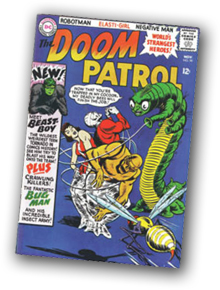
Doom Patrol #99 (DC, 1965), VF+, is an example of a comic that currently sells for over guide, due to the introduction of a character (Beast Boy, aka Changeling) featured on the popular animated Teen Titans TV series, $54.05.
While the condition of an old comic book the amount of visible handling wear on the covers first, with the suppleness and brightness of the inside paper secondary has always been a major factor in determining value, its never been as important as now. Like coins and sports cards before them, comic books can now be submitted to a third-party grading company to be certified and encapsulated in a hard plastic shell (meaning you can no longer open the pages and read the book). The difference between one point, or even a fraction of a point, can mean thousands of dollars for certain comic books.
But that doesnt necessarily mean all old comic books are valuable and this book is designed to help the lay collector in identifying comic books with value, and those with little value. You may be surprised just how many old comic books are worth very little. Keep in mind that for many years, comic books were hugely popular and inexpensive forms of entertainment, aimed at the masses. It wasnt unusual for some titles to sell over a million copies month after month. In fact, more old comic books were saved throughout the years than you might have thought. Problem with most of those saved books is that they are in pretty rough shape today, due to lack of proper storage and excessive handling. But there were a few farsighted individuals that, for whatever reason, saved hordes of comics, some in the most ideal conditions.
The most famous horde of comics found to date was the Mile High Collection discovered in Denver, Colorado, in 1977. The collection had been owned by a late graphic artist named Edgar Church, who from 1937 to 1955 bought a copy of just about every comic ever published, including Action Comics #1 and lots of other key issues. Mr. Church kept most of his collection in a cedar-lined basement, where they stayed extremely well preserved. After Mr. Church passed away, his heirs sold them to Chuck Rozanski, owner of a small chain of Denver comic shops. This incredible horde helped kick-start the modern era of comic book collecting, with condition now a driving factor. The biggest collectors competed for the few truly high-grade copies available, and prices begin to skyrocket. And as prices rose, more hordes began to surface.

